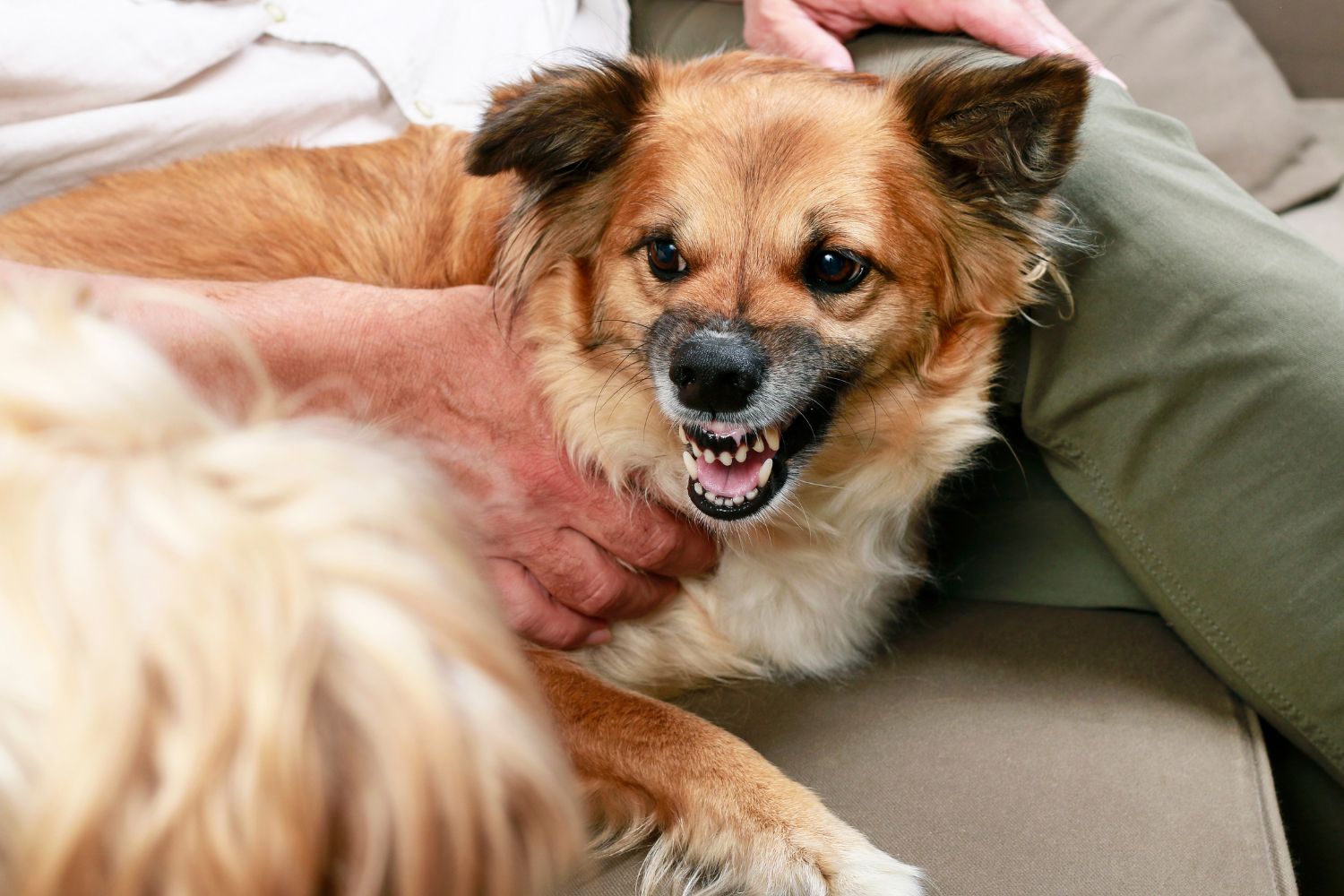
What To Do During an Animal Attack
We’ve given you all the tips to manage an aggressive dog, but what happens when that doesn’t work and you’re being attacked? Here’s a detailed guide on what to do if you find yourself in the middle of a dog attack.
Aim for Sensitive Areas
Dogs have several sensitive areas that can be targeted to deter an attack:
- Eyes: The eyes are extremely vulnerable. If the dog is close enough, use your fingers to poke at its eyes. This can cause the dog to recoil or become disoriented, giving you a moment to escape or further defend yourself.
- Nose: The nose is another sensitive area. Strike the nose with the palm of your hand. This area is packed with nerve endings, and a firm hit can be quite painful for the dog, possibly causing it to back off.
- Throat: The throat is crucial for breathing. Jab at the throat with your fingers or any available object, such as a pen or stick. Targeting the throat can disrupt the dog’s breathing momentarily, which might be enough to stop the attack.
Use Your Weight
If the dog manages to latch onto a part of your body, using your weight can be an effective tactic:
- Press Down: Try to use your body weight to press down on the dog. For instance, if the dog is latched onto your arm, you can drop to the ground, applying pressure onto the dog with your body. This pressure can make it difficult for the dog to maintain its grip and might force it to release you.
- Leverage: If the dog grabs your leg, try to pivot and use your body weight to push the dog down or off balance. This can sometimes disorient the dog enough for you to break free and gain the upper hand.
Slap, Punch, or Kick
In situations where more aggressive actions are necessary, here are some targeted strikes to consider:
- Firm Movements: When striking the dog, use firm, deliberate movements. A panicked or weak hit might not be effective and could provoke the dog further.
- Nose and Head: Slapping or punching the dog on the nose or head can be effective. These areas are sensitive and can cause significant pain. Aim to deliver your strikes with enough force to stun or dissuade the dog.
- Ribs and Face: Kicking can also be effective, especially if you aim for the ribs or face. However, be cautious. Kicking can provoke the dog further if not done with sufficient force or precision. Use this tactic if you are confident in your ability to deliver a strong, controlled kick.
Bite Back
In extreme cases where other methods have failed, you might consider biting the dog:
- Ears and Nose: If the dog has you pinned or if you are in very close quarters, biting can be a last resort. Aim for sensitive areas such as the ears or nose. These areas are less protected and biting them can cause significant pain, potentially forcing the dog to release you.
- Desperation Measure: Remember that biting back is a measure of desperation. It can be effective in causing enough pain to the dog to make it reconsider its attack. However, be aware that this might also escalate the situation if not executed effectively.
Conclusion
Understanding how to physically defend yourself during a dog attack is crucial for minimizing injury and increasing your chances of escaping the situation safely. By targeting sensitive areas, using your body weight strategically, and employing firm strikes or even biting back as a last resort, you can improve your ability to protect yourself.